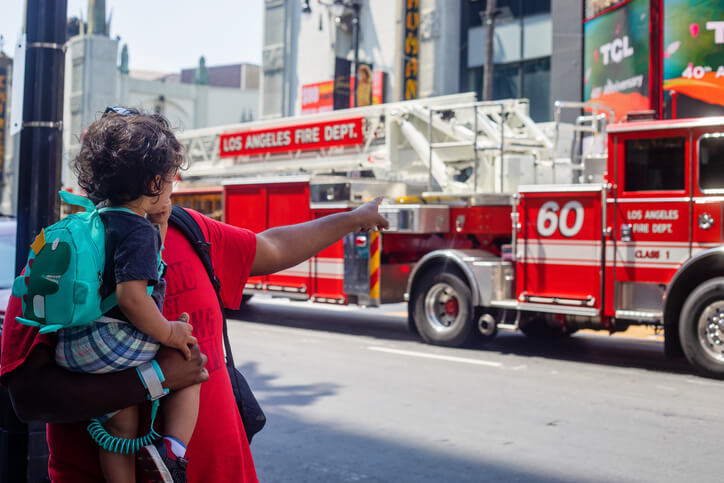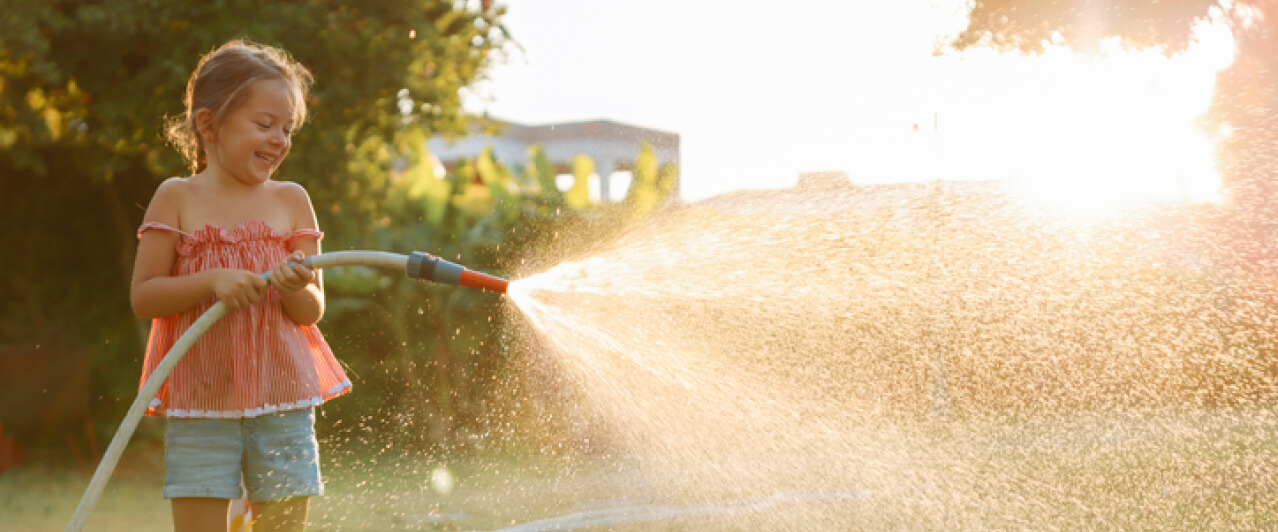Although urban water systems are not designed to have unlimited supply or fully extinguish widespread or prolonged fires, we have a comprehensive emergency preparedness program in place, work closely with our local fire departments to help manage water demand on the system, help boost pressure during fire emergencies when needed, and proactively coordinate with the cities we serve to mitigate potential supply impacts.
Among some of the other steps we take to prepare for and harden our system against wildfires are:
- Installing generators at key facilities to keep our infrastructure operating properly if power is lost or shut off.
- Positioning backup, portable generators where needed at other facilities.
- Visually inspecting our hydrants annually and proactively maintaining them regularly to confirm they can function properly.
- Upgrading hydrants as part of our Infrastructure Improvement Planning process.
- Replacing aging and higher-risk water mains, and increasing the size of main in certain locations to help increase flow and volume.
- Reconfiguring pipelines in certain areas to maximize flow.
- Making other infrastructure investments to increase water storage capacity, upgrade pump stations, and add remote monitoring.
- Creating defensible space around our facilities through vegetation management.
- Equipping our employees with fire packs, portable extinguisher pumps that help stop small spot fires that may reach our facilities should they be on site.
- Conducting annual community EOC training, based on the National Incident Management System and Incident Command System, with local cities and first responders to increase coordination and readiness.
- Assembling regional Operations Rapid Response Teams to quickly mobilize and support emergencies that arise in various Cal Water areas.
- Procuring lay-flat hoses to move water from one location to another.
- Adding Emergency Response Trailer Units to deploy important equipment efficiently in emergencies.
In an emergency, certain necessities of life may be hard to come by, and you may need special tools to deal with unusual situations. These are a few things you should consider putting in your home emergency kit:
- Photocopies of important records (credit and ID cards, deeds, property records, insurance policies, home inventory)
- A small amount of cash or traveler’s checks
- Medical necessities (medication, wheelchair and hearing-aid batteries, contact lens solution, etc.)
- Supplies for your pets (food, a leash or container, veterinary records)
- Food and water for at least three days (including supplies for any pets). A good rule of thumb for water is one gallon per day per person.
- Cooking necessities (a can opener, paper plates, and plastic utensils)
- Portable, battery-powered or hand-cranked radio
- Flashlight
- Extra batteries
- First-aid kit and instruction book
- Matches
- Whistle
- Extra clothing
- Pliers or wrench to turn off utilities
- Local maps
- Sanitation and personal hygiene items (moist towelettes, toilet paper, feminine supplies, garbage bags)
- Blankets
- Fire extinguisher
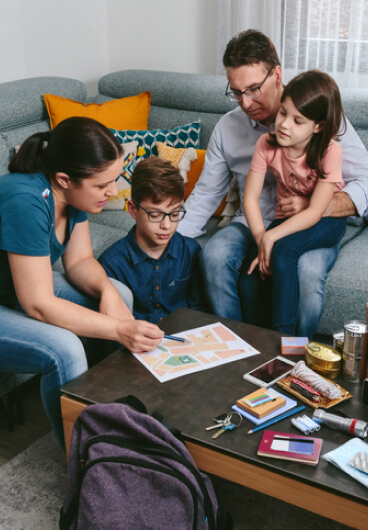
Preparing and Maintaining Your Emergency Kit
Keep your supplies (particularly food) in air-tight plastic bags, and keep your complete emergency kit in one or two closeable, easily portable containers (such as a camping backpack, duffel bag, ice chest, or unused trash can with a lid). The kit should be stored in a cool, dry place that will be easily accessible in an emergency.
Review your emergency kit at least once per year. Make sure that everything is still fresh and in working order, and update it if your family needs have changed.
Knowledge Kit
Emergency supplies are important, but sometimes a little knowledge is more valuable than anything you might have in your emergency kit.
Additional tips to maintain your “Knowledge Kit”
- Find out what kinds of disasters can strike your home. Has there ever been a flood where you live? A mud slide? A major earthquake?
- Learn the danger signs. Do you know how to tell when storm drains are overflowing? or how to find out if a fire is close enough to endanger your home?
- Learn first aid, CPR, and how to operate a fire extinguisher.
- Talk to the experts. Do you know how to shut off your gas and electricity? Because building standards vary, you should consult an expert to find out what action to take in your home.
- Develop a plan of action. Together with your family, decide what you would do if disaster struck. Make sure your plan includes escape routes and a means of staying in contact, and that everyone has all the information they need (where supplies are stored, how to shut off the gas, etc.).
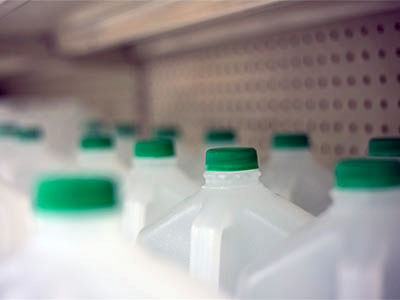
How much water should I keep on hand for emergencies?
After a disaster, it’s critical that you have water on hand in case the water normally provided by Cal Water is unavailable.
Use these guidelines to decide how much water should you set aside for use in an emergency:
- As a general rule, you need at least one gallon of water per person per day (half a gallon for drinking; half a gallon for cooking and cleaning).
- This amount will vary depending on age, activity, physical condition,and diet.
- If it Is hot, you will need more water ? Double the normal amount if it is very hot.
- Children, nursing mothers, and sick people require more water.
- Some additional water should be on hand for medical emergencies.
Additional tips to keep your water fresh
- Purchase commercially bottled water, keep it sealed, and replace it after its “use by” date.
- Purchase a food-grade water-storage container from a camping supply store, thoroughly clean and rinse it, and fill it with water in accordance with the manufacturer’s instructions.
- Store your water in a cool, dry place. If you are not using commercially bottled water, replace it every six months.
- Empty large plastic soft-drink bottles (not milk or juice containers, because they may promote bacterial growth), thoroughly clean and rinse them, sanitize them with household chlorine bleach (one teaspoon of non-scented bleach to a quart of water, swished in the bottle so it touches all surfaces), rinse thoroughly with warm water, and fill to the top with tap water. Add two drops of non-scented liquid household chlorine bleach. Seal tightly using the original cap, being careful not to touch the inside with your fingers. Write the date on the outside of the bottle and store out of direct sunlight.
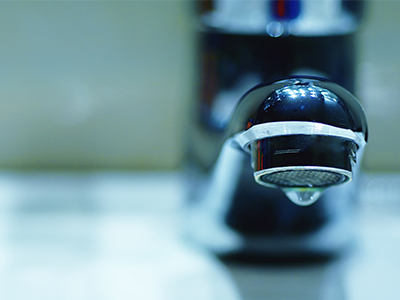
What do I do in an emergency?
After a disaster, it’s critical that you have water on hand in case the water normally provided by Cal Water is unavailable.
Note that the house valve is not the valve in the cement box by the street ? that valve can only be turned off by the water company. The house valve is generally located outside your home near a hose bib.
Additional tips to maintain water in a disaster
- Never ration water unless authorities recommend doing so, and never drink less than a quart of water a day.
- Don’t drink cloudy or otherwise contaminated water from a faucet, stream, or pond without treating it first, unless you are at risk of dehydration.
- Don’t drink soda or alcohol instead of water.
- To use the water in your pipes after your water is turned off, completely open the lowest faucet in your home and capture water as it trickles out.
- To use the water in your hot-water tank, turn off the electricity and/or gas, open the drain at the bottom of the tank, turn off the water intake valve, and turn on the hot water faucet. Be sure to refill the tank before turning it back on.
- You can also get drinkable water from melted ice, and liquids from canned goods.
- Never drink water from radiators, hot water boilers, water beds, toilets, pools, or spas.
